Send Email
Call / WhatsApp Anytime
Send Email
Call / WhatsApp Anytime
The Hydrocracking Reactor is a high-pressure catalytic reactor specifically engineered for the conversion of heavy petroleum fractions into lighter, more valuable products such as diesel, jet fuel, and naphtha. Operating under elevated temperature and hydrogen-rich conditions, this reactor integrates both cracking and hydrogenation functions, enabling deep conversion and ultra-clean fuel production.
Weihai Shidao Heavy Industry (WSHI) specializes in the design and fabrication of high-performance industrial reactors for complex chemical, petrochemical, pharmaceutical, and energy applications. Our reactor vessels are built to endure extreme pressure, temperature, and corrosive conditions, providing stable reaction environments for continuous and batch processing.
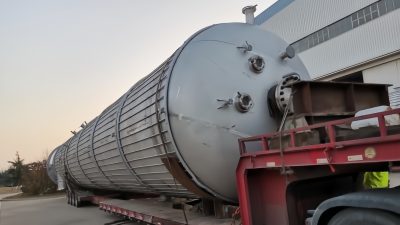
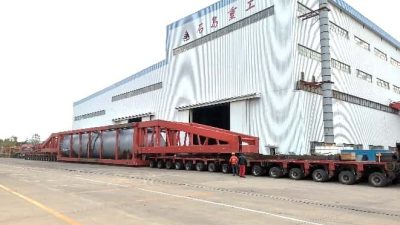
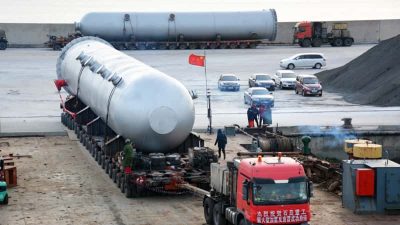
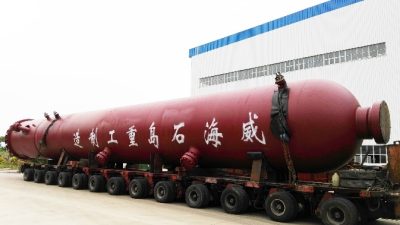
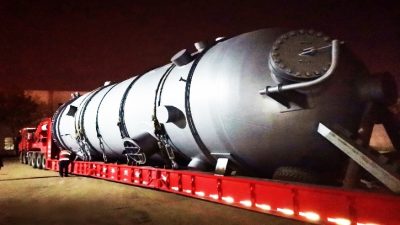

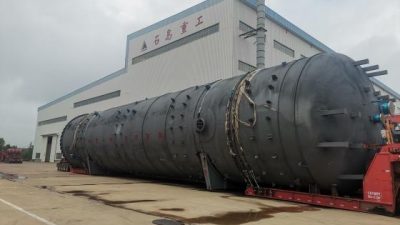
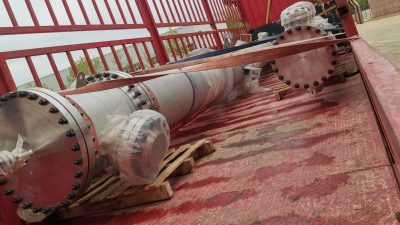
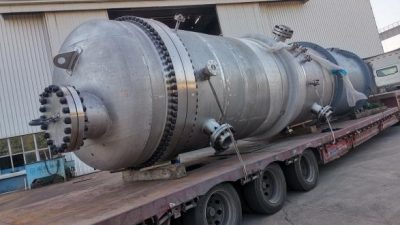
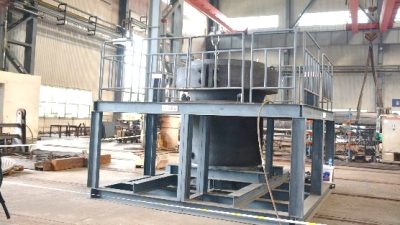
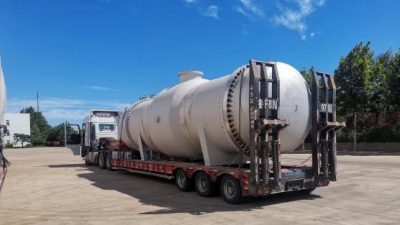

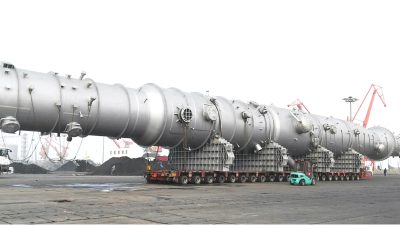
| Type | Description | Typical Application |
|---|---|---|
| Single-Bed Fixed-Bed Reactor | One catalyst bed in a vertical pressure vessel; simple layout; requires strict inlet temperature control | Light hydrocracking, naphtha production |
| Multi-Bed Fixed-Bed Reactor | Multiple catalyst beds with inter-bed quench zones for temperature control; most common industrial configuration | Diesel, jet fuel, ULSD, deep VGO conversion |
| Stacked Reactor System | Two or more reactor vessels arranged in series; allows flexibility in catalyst selection and better volume control | Large-scale units with multiple reaction stages |
| Downflow Trickle-Bed Reactor | Liquid feed and hydrogen gas flow downward through catalyst bed; high mass transfer efficiency and gas-liquid-solid contact | Light cycle oil (LCO) upgrading, aromatics saturation |
| Upflow Reactor (Less Common) | Reactants introduced from the bottom; may improve flow distribution in certain fouling-prone applications | Resid hydrocracking with high contaminant feeds |
| Slurry-Phase Hydrocracking | Catalyst dispersed in oil phase; allows processing of heavy feedstocks and asphaltenes; less common, used in bottoms upgrading | Residue upgrading, heavy oil and bitumen conversion |
Notes:
Certified Safety, Reliable Quality, Custom-Engineered Pressure Vessels.
— Globally Compliant, Built for Harsh Industrial Conditions.
Hydrocracking reactors are critical processing units in modern petroleum refining and upgrading operations. They enable the transformation of low-value heavy hydrocarbons into lighter, cleaner, and more valuable fuel products under high-pressure hydrogenation conditions. These reactors support diverse refining goals—from producing ultra-low sulfur diesel to maximizing middle distillate yields—while meeting strict environmental and performance specifications.
1. Diesel and Jet Fuel Production
Hydrocracking reactors are widely used to convert vacuum gas oil (VGO), coker gas oil, or other heavy distillates into high-quality diesel and aviation kerosene. The catalytic hydrogenation-cracking process removes sulfur, nitrogen, and aromatics, while enhancing cetane index and smoke point—producing ultra-clean transportation fuels compliant with Euro VI and US EPA Tier 3 standards.
2. Vacuum Gas Oil (VGO) Upgrading
Refineries utilize hydrocracking reactors to deeply process VGO into naphtha, diesel, and jet fuel with minimal residue. Compared to FCC (fluid catalytic cracking), hydrocracking offers higher liquid yield, better selectivity, and superior product properties. Multi-bed hydrocracking units with inter-bed quenching allow staged conversion and flexible product control.
3. Residue Hydrocracking (RHCU)
In high-conversion refinery schemes, hydrocracking reactors are applied to partially or fully upgrade atmospheric or vacuum residues (DAO, VR) into lighter fractions. These systems often use high-alloy or Inconel-lined reactors due to severe hydrogen partial pressure and fouling risk. The technology reduces bottom-of-the-barrel yield and eliminates fuel oil in favor of clean distillates.
4. Aromatics Saturation and Smoke Point Improvement
Hydrocracking units with specialized catalysts are used for saturating aromatic compounds in middle distillates. This helps increase the smoke point of jet fuel and improve combustion quality in diesel applications, especially for military or aviation-grade fuels where aromatic content is tightly controlled.
5. Naphtha Production and Isomerization Feedstock
Mild hydrocracking processes are employed to produce paraffinic naphtha streams from LCO or VGO feeds, suitable for downstream isomerization and reforming units. This provides a pathway to high-octane gasoline blending components while maintaining flexibility in feedstock selection.
6. Integration in Petrochemical Refineries
In petrochemical-integrated refinery complexes, hydrocracking reactors are designed to optimize feed preparation for steam crackers and aromatics extraction units. They help control feed properties, remove contaminants, and maximize production of olefin-rich or BTX precursors.
Weihai Shidao offers engineering-grade hydrocracking reactors tailored to refinery scale, feed characteristics, and catalyst system. Designed in compliance with ASME or PED codes and built using advanced pressure vessel manufacturing techniques, our reactors deliver high performance, long operational life, and seamless integration into hydroprocessing units. Custom options include multi-bed internals, high-alloy metallurgy, and modular skids.
A hydrocracking reactor is a high-pressure catalytic pressure vessel used in petroleum refineries to convert heavy hydrocarbon feedstocks—such as vacuum gas oil or residue—into lighter, more valuable products like diesel, jet fuel, and naphtha. The process combines catalytic cracking and hydrogenation in a single unit.
The hydrocracking reactor operates by passing a hydrogen-rich feedstock through multiple catalyst beds at high temperature and pressure. The catalyst promotes the breaking of large hydrocarbon molecules (cracking) and simultaneous saturation with hydrogen (hydrogenation). Inter-bed quench zones manage heat released during the exothermic reaction, ensuring optimal temperature and catalyst performance.
Typical operating pressures range from 100 to 200 bar (1,450–2,900 psi), with some high-severity units reaching up to 250 bar, depending on feedstock and conversion goals.
Reactor sizes vary greatly by capacity. Typical industrial units range from 1.5 meters to 5 meters in diameter and 10 to 30 meters in height, with wall thicknesses of 50–150 mm or more, depending on pressure rating and material. Volume can exceed 100 m³ for large-scale refinery applications.
Hydrocracking reactors usually operate at temperatures between 350°C and 450°C (662°F–842°F). The exact temperature depends on the feed properties, desired conversion, and catalyst system used.
The price ranges from USD $500,000 to over $5 million, depending on design pressure, temperature, metallurgy (e.g., 2.25Cr-1Mo, 9Cr-1MoV, Inconel), capacity, internals (multi-bed, quench zones), and compliance with ASME/PED/GB codes. Engineering, catalyst integration, and auxiliary equipment can further increase project cost.
Looking for High-Performance Industrial Reactors?
WSHI delivers custom-engineered reactor pressure vessels designed to meet the strictest demands of modern chemical and energy industries. Whether you need a high-pressure hydrogenation reactor, a corrosion-resistant lined vessel, or a precision-controlled pharmaceutical reactor, we provide safe, reliable, and certified solutions tailored to your process.
📩 Contact our technical team today to request a quote, share your specifications, or start your project discussion.